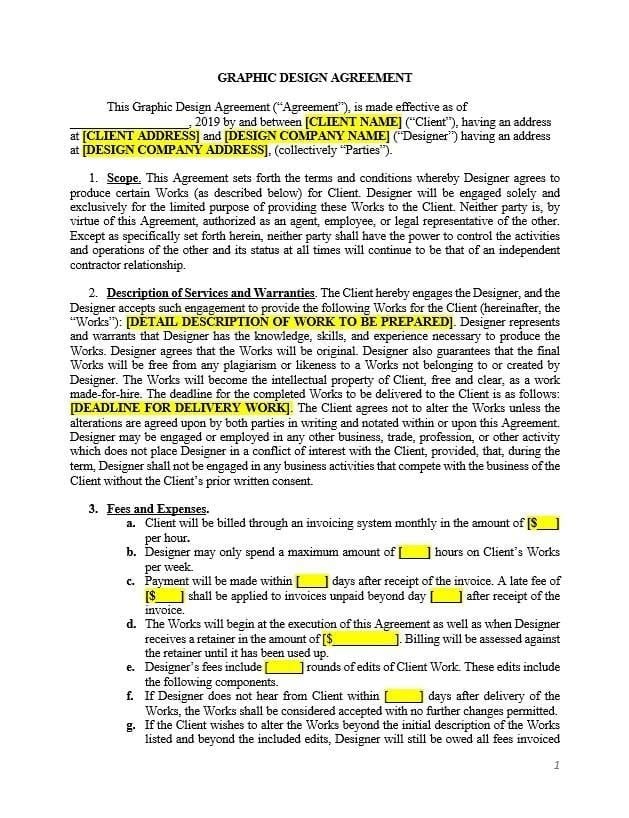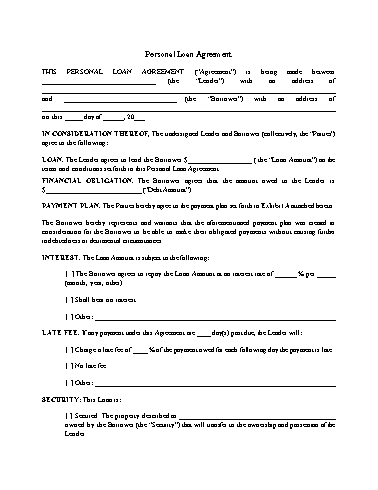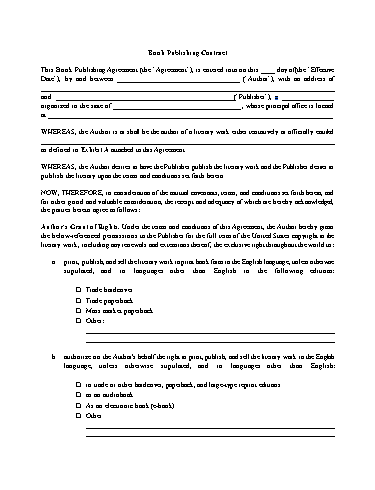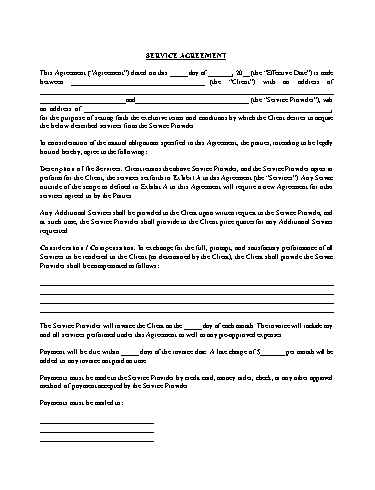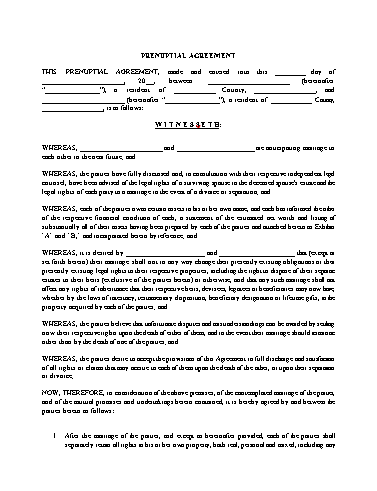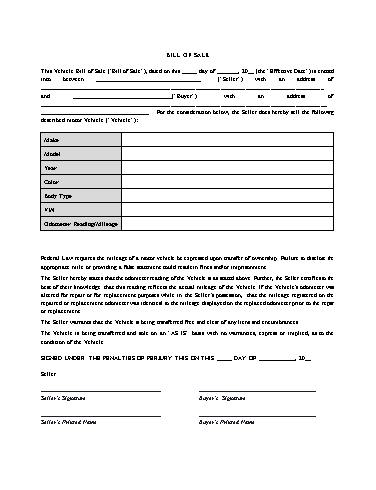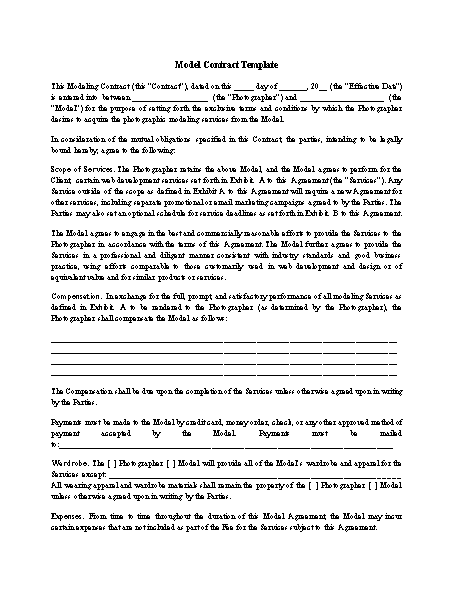Graphic Design Contract Considerations
Having the knowledge and drive to run your own business is only a portion of getting started. Putting together graphic design contracts is a key part of running your design business. It is an underrated but essential component to protecting yourself, your business and your work product. In addition, when a client sees that you have a polished contract, they’ll have more confidence in your abilities. Paired with a design portfolio, your graphic design contract lets people know that you’re both competent and professional. There are a few key things that every freelance design contract should include:
- Detailed descriptions of the work you’ll be doing. The scope of your work for your client should be well detailed, defined and as specific as possible. Your work product and content production for your client is your intellectual property and your manner of producing income. You are providing a service and scope of work that should be protected and outlined in your contract.
- Timeline for deliverables (including dates to aim for so you can create a work-back schedule). Communication and understanding of what you are doing and when you are doing it is essential to any work relationship. The timeline upon which you complete the work for your client provides you with a schedule and your client with an understanding of when they will receive drafts and the final work.
- Payment details (overall cost, down payment, method of payment, due dates for payments, including late fees). It’s up to you to determine what to charge a client for your work. Some designers choose to quote by project scope, while others charge hourly. The latter is better when doing something basic, like business card design. Charging by project is better if it’s something that’ll take you more than a day or two to complete. The most basic designer contracts will ask that the client pays the designer 50% of the total project cost before any graphic design contract work begins. It also states that the remaining 50% will be paid before they’ll receive final files. That last bit is key. Make sure to watermark your work when sending it to the client for approval. Once they give you the final thumbs-up, invoice them for the remainder. It might be a bit disheartening to think that your client’s only incentive to pay you is to get all of their files, but, hey—it works. In this section, you’ll also deal with scope creep, which is one of the most daunting aspects of graphic design contract work. If you haven’t come across it yet, this is when the client comes back with a bazillion changes and “minor tweaks.”
- Copyright ownership. Copyright (Intellectual Property) Ownership is really important. After all, if you create a logo for someone for a few hundred dollars, and then they use it on products that earn them millions, you’ll shoot yourself in the foot by not retaining some IP ownership. One option is to transfer some copyright to your clients, but not all. As an example, you can grant the client full ownership of your design as-is, but that they don’t have permission to modify it in any way. You contract should specify where and how the client can use your work, that you receive credit for the work and limit the full use of the work. Additionally, you can specify in the graphic design contract that you can use the work for promotional purposes. This would give you permission to display the work in your design portfolio, (unless they ask you to sign a non-disclosure agreement, or NDA).
- Termination clause, i.e. whether either party can terminate the contract before X date, and what payment is required (if any) to end the contract with you. It is wise to include in your contract that either the designer or the client can terminate the project at any time. This is good for both of you, as you never know what life may throw at you at any given moment. A family emergency might arise, your computer might give up the ghost, or you might just discover that the client is terrible to work with. It’s up to you to determine what the parameters are for termination, but the most common freelance design contract clause is that the client needs to pay you for the work done up until the termination date. If, however, the client decides to terminate the project close to the end (usually in an attempt to get out of paying you), stipulate in the contract that they’re still responsible for paying you in full. You can also add in a bit about keeping all copyright and ownership to everything you created in that kind of situation. As further protection, it is always wise to build a buffer between the date the client or you states they wish to cancel and when the actual contract will terminate. This buffer will provide you with the ability to assess and recoup any expenses or potential products you may have ordered in connection with the work for the client.
A solid graphic design contract protects yourself, your work, provides credibility and gives you the ability to display your creativity and retain ownership as you build your business. The information provided on this post does not, and is not intended to, constitute legal advice; instead, all information, content, and materials available on this site are for general informational purposes only. Users of this website should contact their attorney to obtain advice with respect to any particular legal matter. No reader, user, or browser of this site should act or refrain from acting on the basis of information on this site without first seeking legal advice from counsel in the relevant jurisdiction. Only your individual attorney can provide assurances of applicable law or appropriate counsel to your particular situation.
Your Signing experience is worth celebrating!
ApproveMe is easy document signing for busy people. Built on the belief that every new agreement with a customer or client should be celebrated.
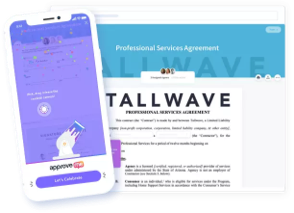
GRAPHIC DESIGN AGREEMENT
This Graphic Design Agreement (“Agreement”), is made effective as of ___________________, 2019 by and between [CLIENT NAME] (“Client”), having an address at [CLIENT ADDRESS] and [DESIGN COMPANY NAME] (“Designer”) having an address at [DESIGN COMPANY ADDRESS], (collectively “Parties”). 1. Scope. This Agreement sets forth the terms and conditions whereby Designer agrees to produce certain Works (as described below) for Client. Designer will be engaged solely and exclusively for the limited purpose of providing these Works to the Client. Neither party is, by virtue of this Agreement, authorized as an agent, employee, or legal representative of the other. Except as specifically set forth herein, neither party shall have the power to control the activities and operations of the other and its status at all times will continue to be that of an independent contractor relationship. 2. Description of Services and Warranties. The Client hereby engages the Designer, and the Designer accepts such engagement to provide the following Works for the Client (hereinafter, the “Works”): [DETAIL DESCRIPTION OF WORK TO BE PREPARED]. Designer represents and warrants that Designer has the knowledge, skills, and experience necessary to produce the Works. Designer agrees that the Works will be original. Designer also guarantees that the final Works will be free from any plagiarism or likeness to a Works not belonging to or created by Designer. The Works will become the intellectual property of Client, free and clear, as a work made-for-hire. The deadline for the completed Works to be delivered to the Client is as follows: [DEADLINE FOR DELIVERY WORK]. The Client agrees not to alter the Works unless the alterations are agreed upon by both parties in writing and notated within or upon this Agreement. Designer may be engaged or employed in any other business, trade, profession, or other activity which does not place Designer in a conflict of interest with the Client, provided, that, during the term, Designer shall not be engaged in any business activities that compete with the business of the Client without the Client’s prior written consent. 3. Fees and Expenses. a. Client will be billed through an invoicing system monthly in the amount of [$___] per hour. b. Designer may only spend a maximum amount of [____] hours on Client’s Works per week. c. Payment will be made within [____] days after receipt of the invoice. A late fee of [$____] shall be applied to invoices unpaid beyond day [____] after receipt of the invoice. d. The Works will begin at the execution of this Agreement as well as when Designer receives a retainer in the amount of [$__________]. Billing will be assessed against the retainer until it has been used up. e. Designer’s fees include [_____] rounds of edits of Client Work. These edits include the following components. f. If Designer does not hear from Client within [_____] days after delivery of the Works, the Works shall be considered accepted with no further changes permitted. g. If the Client wishes to alter the Works beyond the initial description of the Works listed and beyond the included edits, Designer will still be owed all fees invoiced before any additional edits are made. Designer shall then invoice for additional edits, which will be determined at the time the edits are discussed. h. The Client agrees to reimburse pre-approved expenses and costs as indicated on invoices. Such expenses and costs shall be accompanied by receipts and reasonable supporting documentation. The Parties will agree on the expenses prior to the expenses being incurred. 4. Taxes. Designer herein acknowledges that they will receive an IRS Form 1099-MISC from the Client. Designer and Client shall each be solely responsible for all of the federal, state, and local taxes applicable to them. 5. Deliverable and Milestones. All Works are to be completed and wrapped up by [FINAL WORK DELIVERY DATE]. Designer agrees to the following milestones: a. [MILESTONE A] b. [MILESTONE B] c. [MILESTONE C] 6. Limitation of Purpose. Client agrees that Client may only use the Works created by Designer for the limited purposes outlined by this Agreement. Specifically, the Works may be used for the following purposes: a. [LIMITATION ON CLIENTS USE OF WORKS] b. [LIMITATION ON CLIENTS USE OF WORKS] c. Should Client use the Works for any other purpose, Designer is free to pursue all remedies available under the law, including an action for intellectual property infringement. 7. Nonexclusivity. Client and Designer hereby acknowledge and agree that nothing contained herein is to establish an exclusive relationship between the Parties. Designer shall be free to continue working for and taking on new clients, without regard to Client. Designer does not need Client approval for any such work. 8. Client’s Legal Requirements. It is the Client’s sole and exclusive responsibility to ensure that all legal requirements for Client’s business are met. Such legal requirements include, but are not limited to, ensuring claims on advertising and graphics are true, accurate, and may be legally stated, as well as ensuring all products are lawful. Designer shall not be responsible for any legal, technical, or regulatory specifications. 9. Termination. The Parties may terminate this Agreement prior to the specified end date by giving notice in writing. Notice shall be given at least 30 days prior to a termination date stated in the written notice. This Agreement may be immediately terminated in the event that there is a breach of the terms by either Party. However, if Client finds the Works unsatisfactory, Designer shall have [____] to cure the Works. This agreement will also immediately terminate upon the death of the Designer or Client, the inability of the Designer to perform the services because of a sudden and medically documented physical or mental disability, the liquidation, dissolution or discontinuance of the business of the Client or Designer in any manner, or the filing of any petition by or against the Client or Designer under federal or state bankruptcy or insolvency laws. Upon termination, all fees and reimbursements shall be paid and provided to the Designer as they have accrued up to the date of termination. Upon expiration or termination of this agreement, or at any other time upon the Client’s written request, Designer shall promptly after such expiration or termination: a. Deliver to the Client all deliverables (whether complete or incomplete) and all hardware, software, tools, equipment, or other materials provided for Designer’s use by the Client; b. Deliver to the Client all tangible documents and materials (and any copies) containing, reflecting, incorporating, or based on the Client’s confidential or proprietary information, as discussed further elsewhere in this Agreement; c. Permanently erase all of the confidential or proprietary information from any of the Designer’s computer systems; and d. Certify in writing to the Client that Designer has complied with the requirements of this clause. 10. Confidential or Proprietary Information. Designer hereby acknowledges and agrees that Designer may receive confidential and/or proprietary information relating to Client’s business. Such information may include, but will not be limited to, client lists, client notes, specifications, project information, plans, and/or technological resources. The confidential and/or proprietary information is significantly important to Client’s business and it has been developed or obtained over time, with significant resources involved. Designer understands and agrees that any unintended disclosure of any of the confidential and/or proprietary information would be significantly detrimental to Client. As such, Designer agrees that they shall: a. Not disclose the confidential and/or proprietary information by any means not authorized by the Client to any third parties; b. Not copy or duplicate the confidential and/or proprietary information unless specifically directed to do so by the Client; c. Not disclose the confidential and/or proprietary information by any unauthorized means to any third parties for a period of at least one year following the termination of this agreement; d. Not use the confidential and/or proprietary information for any purpose except those expressly authorized by the Client; e. Inform Client immediately if Designer becomes aware of any unauthorized use or disclosure of the confidential and/or proprietary information. 11. Intellectual Property. Designer agrees that all inventions, trade secrets, confidential and/or proprietary information, and work-product conceived, created or developed by Designer which are a used for the limited purposes outlined by this Agreement, b related to the Client’s actual business or research and development, or c developed, made, or discovered by Designer in the course of the performance of Designer’s duties for the Client, i.e., all of the Works created, shall be the property of the Client. Designer hereby assigns to the Client the entire right, title, and interest in and to the Works only for the limited purposes as outlined elsewhere in this Agreement, including all necessary copyrights, patents, trademarks, or other intellectual property rights relating to all Works. 12. Portfolio Use. Notwithstanding the foregoing, Designer shall be permitted to use all Works in Designer’s professional portfolio, after such Works have been made public by the Client. Nothing contained herein shall limit Designer’s such right. 13. Credit. Client shall credit Designer’s names on Works created hereunder in a manner agreed to by the Parties in writing prior to the release of the Works to the public. 14. Indemnification. Designer and Client shall each defend, indemnify, and hold the other harmless (including all affiliates, officers, directors, employees, agents, successors, and assigns) from and against all losses, damages, liabilities, deficiencies, actions, judgments, interest, awards, penalties, fines, costs, or expenses of whatever kind (including reasonable attorneys’ fees) arising out of or resulting from bodily injury, death of any person, damage, real or intangible, to personal property resulting from the other’s acts or omissions or the breach of any representation, warranty, or obligation under this Agreement. 15. Survival. Any provision of this Agreement which by its terms imposes continuing obligations on either of the Parties shall survive termination of this Agreement. 16. Dispute Resolution. In case of a dispute between the Parties relating to or arising out of this Agreement, the Parties shall first attempt to resolve the dispute personally and in good faith. If these personal resolution attempts fail, the Parties shall then submit the dispute to binding arbitration. The arbitration shall be conducted in the county and state noted in the GOVERNING LAW provision of this Agreement. The arbitration shall be conducted by a single arbitrator, and such arbitrator shall have no authority to add Parties, vary the provisions of this Agreement, award punitive damages, or certify a class. The arbitrator shall be bound by applicable and governing federal law as well as the law of Ohio. Each Party shall pay their own costs and fees. Claims necessitating arbitration under this section include, but are not limited to: contract claims, tort claims, claims based on federal and state law, and claims based on local laws, ordinances, statutes or regulations. Intellectual property claims by Designer will not be subject to arbitration and may, as an exception to this sub-part, be litigated. The Parties, in agreement with this sub-part of this Agreement, waive any rights they may have to a jury trial in regard to arbitral claims. 17. Governing Law. This Agreement shall be governed by and construed in accordance with the internal laws of [STATE] without giving effect to any choice or conflict of law provision or rule. Each party irrevocably submits to the exclusive jurisdiction and venue of the federal and state courts located in [COUNTY NAME] county in any legal suit, action, or proceeding arising out of or based upon this Agreement or the Works provided hereunder. 18. Benefit. This Agreement shall be binding upon and shall inure to the benefit of each of the parties hereto, and to their respective heirs, representatives, successors, and assigns. 19. Counterparts. This Agreement may be executed in counterparts, all of which shall constitute a single agreement. The Agreement shall be effective as of the date set forth above. 20. Notices. All notices, requests, consents, claims, demands, waivers and other communications hereunder (each, a “Notice”) shall be in writing and addressed to the Parties at the addresses set forth on the first page of this Agreement. All notices shall be delivered by email or at the address which the parties may designate to each other through personal delivery, nationally recognized overnight courier (with all fees prepaid), or certified or registered mail (in each case, return receipt requested, postage prepaid). Except as otherwise provided in this Agreement, a Notice is effective only if (a) the receiving party has received the Notice and (b) the party giving the Notice has complied with the requirements of this Section. 21. Force Majeure. Designer is not liable for any failure to perform due to causes beyond its reasonable control including, but not limited to, acts of God, acts of civil authorities, acts of military authorities, riots, embargoes, acts of nature and natural disasters, and other acts which may be due to unforeseen circumstances. 22. Headings. Headings to this Agreement are for convenience only. Headings shall in no way affect the provisions themselves and shall not be construed in any way that would limit or otherwise affect the terms of this Agreement. 23. Entire Agreement; Modification. The agreement embodies the entire agreement between the Client and Designer relating to the subject matter hereof. This Agreement may be changed, modified or discharged only if agreed to in writing by both parties. IN WITNESS WHEREOF, the Parties execute this Agreement as of the date first above written. CLIENT: _______________________ [CLIENT SIGNATURE] DESIGNER: __________________________ [DESIGNER SIGNATURE]
Frequently Asked Questions
How do you write a graphic design contract?
How much do graphic designers charge per design?
Graphic designers charge per design according to the project’s complexity and the number of hours it takes to complete it.
A freelance graphic design contract is a document that outlines the terms of your agreement with your client. It can be customized according to your needs or company's policies so that you can protect yourself from any disputes that may arise during the course of your project. The document should also include information about how much you charge for your services, how long it takes for you to complete a job, what materials will be provided by the client, and what their responsibilities are in return for.
What is a design agreement?
The design agreement is an important document because it defines the scope of work and outlines expectations. It also helps to protect both parties in case there are any disagreements.
A graphic design contract template is a great way to get started with your own design agreement.
What's a graphic design agreement template?
How to make graphic design written agreement
What is a Graphic Design Contract?
A freelancer's graphic design agreement will generally include terms such as payment, scope of work, deadlines, and exclusivity. Graphic designers should also consider including their own rights to their work in the contract so they can be sure they're protected.
A graphic design contract template is a useful tool for freelancers to use when drafting up their agreement with clients. The template can also help give them an idea of what steps to take when negotiating with potential clients about their project scope, payment terms, and deadlines.
Who needs a Graphic Design Contract?
The most important part of a graphic design contract is that it clearly defines what the designer will create and how they'll do so. This can include any type of artwork - logos, posters, flyers, web designs, etc.
How to use a Freelance Graphic Design Contract Template
If you're looking for an easy way to get started with freelancing as a graphic designer, then using a freelance graphic design contract template is probably your best option.
What must a Graphic Design Contract Template have?
What should I put in my Graphic Design Contract?
A freelance graphic design contract should include important information such as:
- The scope of work, which includes the deliverables, deadlines, payment schedule and any other special obligations
- The scope of services to be rendered by each party
- The terms for performance by each party
- Any additional agreements made between the parties
How to make a Graphic Design Contract
How long is a Graphic Design Contract good for?
The length of the contract depends on many factors such as: number of projects, amount of time required for each project, frequency of work, type of work required, etc.
What are some Graphic Design Contract examples?
Send Contracts in Minutes
Unlock the power of WP E-Signature on your website using your branding today!
Get Started Now

